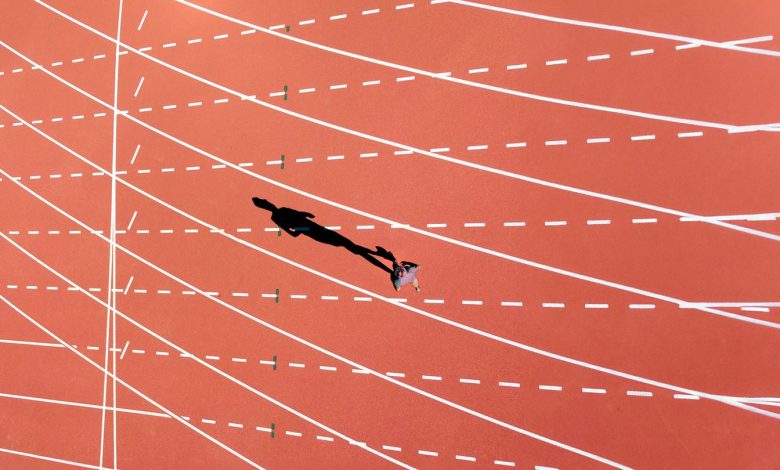Trouble Walking a Curved Path Could Be an Early Sign of Mild Cognitive Impairment

[ad_1]
“By demonstrating the efficacy of curve walking as a diagnostic tool, our study suggests a noninvasive, cost-effective method that could be readily incorporated into clinical practice,” says the study’s senior author, Behnaz Ghoraani, PhD, an associate professor in the department of electrical engineering and computer science at Florida Atlantic University College in Boca Raton. “Its primary value is in complementing existing cognitive assessments, offering a practical approach that could lead to earlier diagnosis and intervention for mild cognitive impairment.”
Early Detection Can Lead to Better Outcomes
A More Precise Method to Evaluate Walking Problems
This study explored how walking a curved path as opposed to a straight line might provide a clearer picture of cognitive ability, since it requires more complex coordination, like changing directions and adjusting balance, for example.
For the analysis, 30 healthy controls and 25 people with mild cognitive impairment performed single-task walking tests on straight and oval paths. Participants’ average age was about 69 years old.
Dr. Ghoraani and her colleagues compared 50 gait markers for each test between the two groups. They observed that older adults with MCI exhibited reduced walking performance compared with the healthy controls, and the differences in gait markers were more pronounced during curved path walking as opposed to straight walking.
Overall, 31 out of 50 gait markers (62 percent) were greater for the MCI group than for healthy control older adults when the walking tests changed from straight walking to curved walking, and 13 markers showed significant differences between the two study groups.
The findings highlight that individuals with MCI exhibited significantly reduced step length and speed during curve walking. The MCI group also showed diminished symmetry and regularity in both step and stride lengths for curved walking. They also required extended double support time in various areas, especially while changing directions, which resulted in reduced step speed.
“Our study revealed that curve walking could unveil more significant differences in gait parameters between healthy controls and individuals with MCI than straight walking,” says Ghoraani. “It was particularly intriguing to observe how curve walking, which demands greater cognitive and motor coordination, could serve as a valuable indicator of early-stage cognitive decline, suggesting that the integration of simple yet challenging gait tasks into routine assessments could significantly improve our ability to identify individuals at risk of progressing to dementia.”
Incorporating a Depth Camera to Track Movement
To record study participants’ gait, the research team used a depth camera, which can detect and track 25 joints of body movement. Signals from the 25 body joints were processed to identify 50 gait markers for each walking test.
While depth cameras, such as the Kinect v.2 used in this research, provide detailed and precise measurements of gait parameters, the scientists recognized the importance of accessibility in clinical and home settings.
Ghoraani notes that her team is actively working on adapting the methodology for use with regular smartphone cameras.
“This approach could democratize access to early diagnostic tools for MCI, making it possible for individuals to perform preliminary assessments in the comfort of their homes or for healthcare providers to conduct assessments without the need for specialized equipment,” she says.
Although it may lack precision, observational gait analysis may currently be performed using stopwatches and marked walkways to measure gait speed and stride length.
Ozama Ismail, PhD, the director of scientific programs for the Alzheimer’s Association, underscores how this kind of technology can meet a global need for more readily accessible and inexpensive diagnostic methods for Alzheimer’s and other dementias.
“While imaging, such as brain PET scans, is currently the most reliable way to know if a person is in the early stages of Alzheimer’s, there remain barriers to accessing advanced imaging tests,” says Dr. Ismail, who was not involved in the study. “The development of cost-effective methods, particularly those that are repurposing existing technologies such as the camera used in this study, are encouraging.”
Further Support for the Value of Gait Analysis
Currently, typical clinical evaluations for dementia include a detailed history, comprehensive physical and neurological examination, cognitive testing, blood work, and brain imaging. Depending on the clinical setting, however, these methods can be time-consuming, costly, and outside of some clinicians’ capabilities.
These findings add to a body of information suggesting that gait changes may provide a noninvasive, low-cost, easy-to-perform method of detecting mild cognitive impairment (MCI), according to Dylan Wint, MD, the director of the Cleveland Clinic Lou Ruvo Center for Brain Health.
“This study needs to be validated in a larger population,” says Dr. Wint, who was not involved in the research. “Additional testing with ‘dual-tasking’ [performing a cognitive task while curved walking], as well as correlation with biomarkers of causes of MCI such as cerebrovascular disease and Alzheimer’s disease, should be considered.”
[ad_2]




